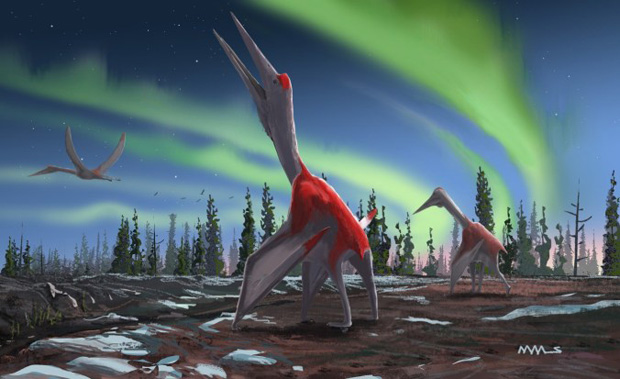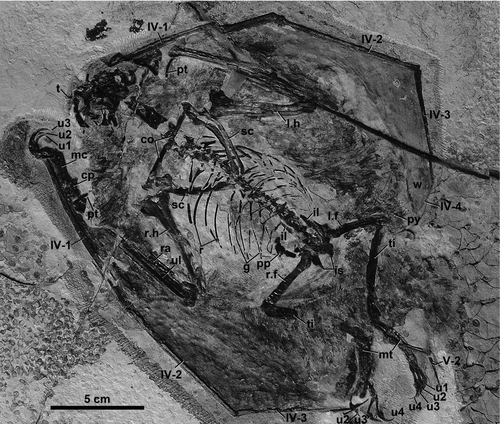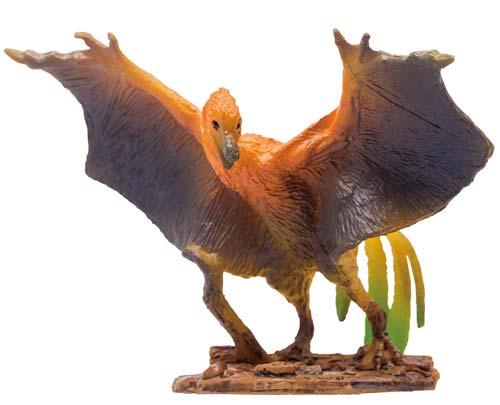Amazing Fossils Inspire Aeronautical Engineers
Fossils Influence Mechanical Designs in the Aeronautical Industry
In vertebrates, powered flight has evolved independently in several groups, within the mammals there are the bats and within the Archosauria clade, other types of animal have evolved the ability to take to the air and to keep themselves airborne. We have the birds, but also their close cousins the non-avian dinosaurs, as palaeontologists have discovered numerous examples of volant dinosaurs (Microraptor, Ambopteryx and Yi qi for instance).
There are also the pterosaurs, some of which were the largest flying animals to have ever existed with wingspans measuring more than ten metres across. Engineers are now taking a serious look at some of the different types of wing morphology that have evolved. The fossil record is helping to inspire new thinking in mechanical design.
The Recently Described Giant Azhdarchid Pterosaur Cryodrakon boreas Helping to Inspire New Ideas in Mechanical Design

Picture credit: David Maas
The Evolution of Different Solutions to the Problem of Sustained Powered Flight
Living birds and insects have been studied to help find solutions to aeronautical problems encountered when designing new planes, helicopters and unmanned aircraft such as drones. However, a team of scientists including researchers from Bristol University, the Natural History Museum of Los Angeles County and Queen Mary University (London), have examined what the fossil record can teach us about powered flight.
Lead author of a recently published paper in “Trends in Ecology & Evolution”, Dr Elizabeth Martin-Silverstone, explained that there were a select few pterosaur fossils that provide dramatic insights into the anatomy and morphology of wing membranes, which could influence the thinking of aeronautical engineers as they contemplate concepts such as vertical take-off and landing capabilities in drones.
The post-doctoral researcher commented:
“There are two or three absolutely amazingly preserved pterosaur fossils that let you see the different layers within the wing membrane, giving us insight into its fibrous components. Also, some fossils are preserved enough to show the wing attachments beneath the hip. While you don’t know exactly the shape of the wing, by knowing the membrane attachments you can model the effectiveness of different wing shapes and determine which would have performed best in natural conditions.”
Beautifully Preserved Pterosaur Fossil Remains Helping to Inspire Engineers

Picture credit: Chinese Academy of Sciences/Journal of Vertebrate Palaeontology
Taking to the Air – A Big Leap Upwards
Taking to the air is a challenge in itself. In the natural world, leaping or jumping to launch yourself into the air, using what is termed a ballistic launch is very common. For larger birds, they require a running start in order to build up enough momentum before lift-off.
Pterosaurs, some of which weighed more than 250 kilograms and stood taller than a giraffe, may have developed a unique method of taking to the air from a stationary position. For example, co-author Mike Habib (Natural History Museum of Los Angeles County), postulates that the wing membrane and powerful, robust associated muscle attachment within the wings allowed these flying reptiles to generate a high-powered leap off their elbows and wrists – providing the drive to enable them to become airborne.
Studying Pterosaur Fossils
The unique physiology of the Pterosauria, exquisitely laid out in some beautifully preserved fossil specimens might help engineers to overcome some of the launch problems associated with drones. In essence, future biomechanical studies of long extinct creatures may influence the next generation of manned and unmanned aeronautical vehicles.
A number of different types of maniraptoran dinosaur came up with novel solutions when it came to flight. Whether or not animals such as the bizarre scansoriopterygid Yi qi were gliders or were capable of powered flight remains open to debate, but these bizarre evolutionary dead ends (extinct leaving no modern descendants), could help to drive innovative solutions to some of today’s aeronautical conundrums.
A Model of the Bizarre Scansoriopterygid Yi qi

The picture (above) shows a scansoriopterygid from the PNSO model range.
To view this range: PNSO Age of Dinosaurs.
Everything Dinosaur acknowledges the assistance of a media release from the University of Bristol in the compilation of this article.
The scientific paper: “Volant Fossil Vertebrates: Potential for Bioinspired Flight Technology” by Elizabeth Martin-Silverstone, Michael B. Habib and David W.E. Hone published in Trends in Ecology & Evolution.
The Everything Dinosaur website: Everything Dinosaur.

